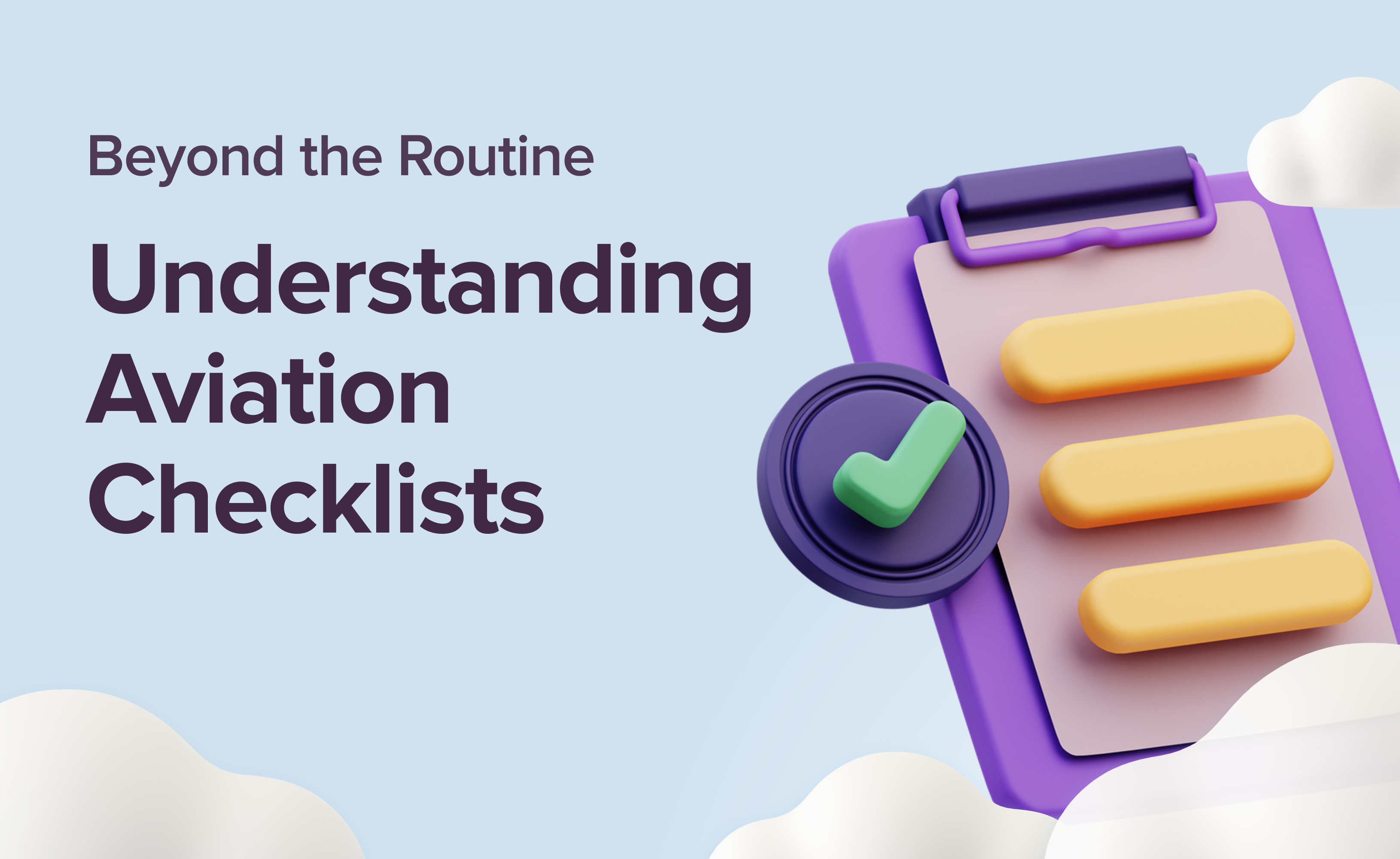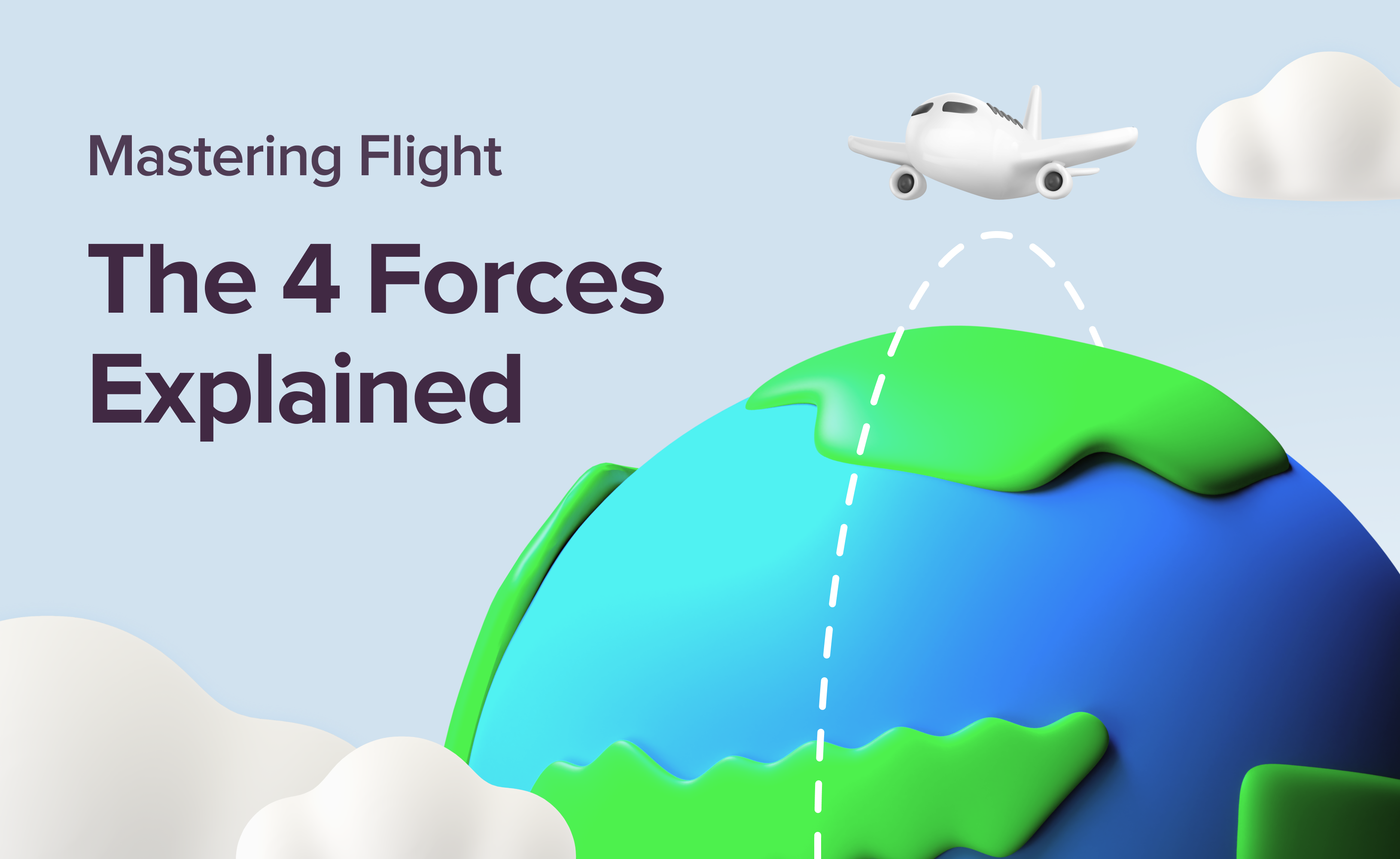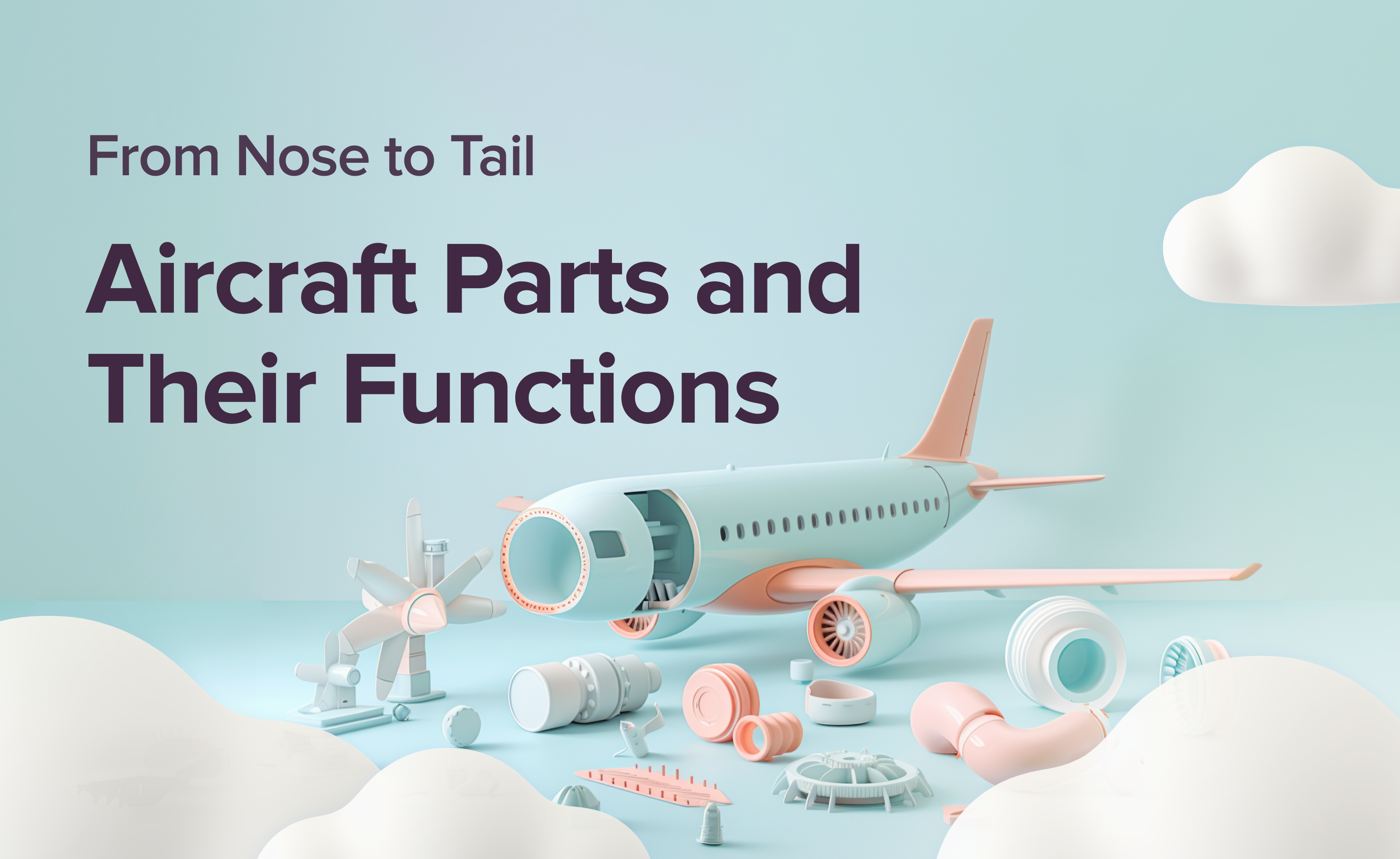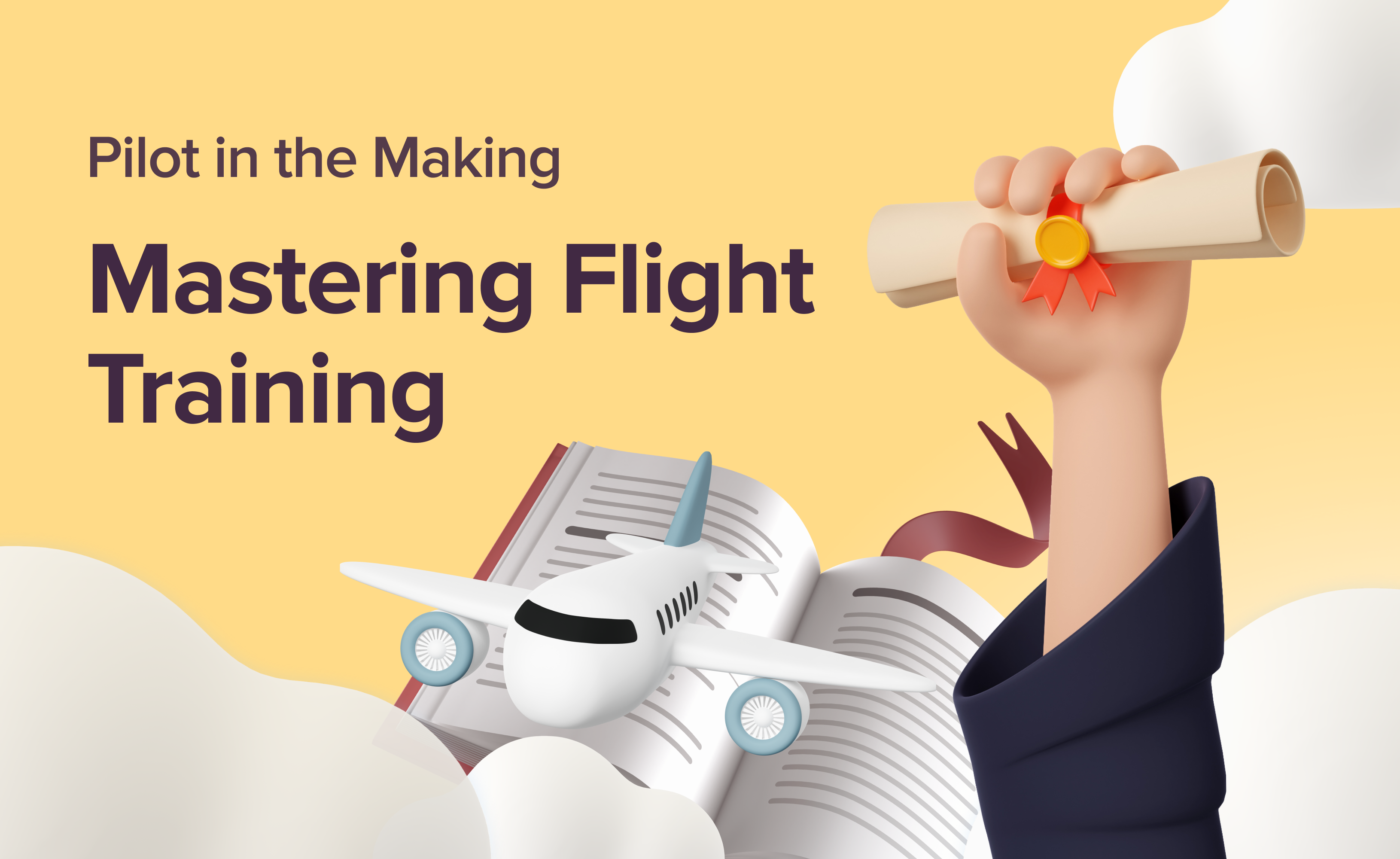The Future of Flight: 12 Tech Trends Shaping Aviation

The aviation industry has always been at the forefront of technological advancement, pushing the boundaries of innovation to deliver safer, more efficient, and sustainable air travel. Technology has been the unwavering compass guiding aviation's evolution, from the ground-breaking feats of the Wright brothers to today's supersonic jets. Now, a new wave of digital transformation is poised to reshape the industry once again.
From the way we book flights to the aircraft that carry us, technology is transforming every facet of air travel. In this article, we'll explore how these technological advancements are enhancing passenger experiences, modifying operations, and paving the way for a more sustainable and environmentally friendly future of the flight.
1. Sustainable Aviation
The aviation industry is undergoing a profound transformation, driven by the imperative to reduce its environmental impact. At the forefront of this change is the development and deployment of sustainable aviation fuels (SAFs). Produced from a diverse range of feedstocks, including waste oils, agricultural residues, and even algae, SAFs offer up to an 80% reduction in CO2 emissions compared to traditional jet fuel. Airlines like British Airways and United Airlines are investing heavily in SAF research and production. Airbus signed a memorandum of collaboration with Airports Council International (ACI) World to scale low-carbon fuels and launched an investment consortium to accelerate the financing of SAF.
Airports, too, are taking on a role in the drive for sustainability. Solar panels, for instance, are being installed across airport facilities to generate clean and sustainable electricity. Many of the airports are also adopting energy-efficient technologies such as LED lighting, smart HVAC systems, and motion sensors to reduce their carbon footprint.
By embracing innovation, investing in research and development, and fostering collaboration, the sector is steadily progressing towards a future where air travel can coexist harmoniously with the environment.

2. Electric and Hybrid-Electric Propulsion
While the transition to electric aviation will be gradual, the industry is strongly committed to this technology. The aviation industry is exploring innovative propulsion methods to reduce emissions and enhance efficiency. Electric and hybrid-electric aircraft represent a significant step forward.
All-Electric Aircraft represent the most ambitious goal in electric aviation. By eliminating fossil fuels altogether, these aircraft could operate with zero direct emissions. Companies like Vertical Aerospace and Joby Aviation are at the forefront of developing electric vertical takeoff and landing (eVTOL) aircraft, primarily targeting urban air mobility. However, current battery technology limitations restrict their range, making them primarily suitable for shorter flights and urban air mobility (UAM) applications.
Hybrid-Electric Aircraft offer a more pragmatic approach by combining electric propulsion with traditional jet engines. This hybrid configuration enables longer flight ranges and increased payload capacity, making it suitable for regional airliners and cargo planes. Companies like Airbus and Rolls-Royce are investing heavily in hybrid-electric propulsion research and development.
Electric and hybrid-electric aircraft have the potential to cut carbon emissions by up to 43 megatons annually on European routes by 2050, representing a third of total emissions.
Beyond propulsion, innovative aircraft designs are also contributing to improved efficiency and reduced emissions. Concepts such as blended wing body aircraft and distributed electric propulsion offer the potential to reshape the aerodynamic configuration of aeroplanes, leading to lower fuel consumption and reduced noise levels.
Despite significant progress, the path to decarbonising aviation remains challenging. For instance, the weight limitations of aircraft restrict the use of current battery technology, hindering the widespread adoption of electric propulsion.

3. Drones and Autonomous Vehicles
Autonomous aircraft, also known as uncrewed aerial vehicles (UAVs) or drones, are set to reshape various sectors of aviation, from cargo delivery and surveillance to passenger transport. Drones are used to prevent bird strikes, thereby protecting lives and ensuring passenger safety. These pilotless aircraft also play a crucial role in infrastructure management, inspecting runways and critical facilities, identifying issues, and enhancing worker safety—all while reducing costs.
In addition, autonomous transporters like self-driving baggage carts and shuttle buses are enhancing airport efficiency. Stuttgart Airport in Germany uses autonomous snow-clearing vehicles to remove snow and ice from runways. Hong Kong International Airport employs self-driving patrol cars to monitor restricted zones, while Kansai Airports in Japan has implemented an automated system for attaching boarding bridges to aircraft, improving safety and streamlining boarding processes.
According to Mordor Intelligence, the global market for airport robots is expected to grow at a compound annual growth rate (CAGR) of 15% by 2025. Investments in automation and robotics are set to drive further expansion in this area.

4. Advanced Materials and 3D Printing
Carbon fibre composites, lightweight alloys, and 3D-printed components are at the forefront of aviation materials transformation. These building materials provide superior strength-to-weight ratios, increased durability, and enhanced fuel efficiency. By incorporating them into aircraft structures, manufacturers can significantly reduce weight, improve performance, and minimise environmental impact.
For example, Boeing's 787 Dreamliner extensively uses carbon fibre composites, which makes the aircraft lighter and more fuel-efficient than its predecessors. This weight reduction allows the Dreamliner to achieve up to 20% better fuel efficiency compared to older aircraft models, directly impacting both operating costs and carbon emissions. Additionally, Airbus has adopted advanced materials in the A350 XWB, where over 50% of the aircraft's structure is made from composites, further demonstrating the industry's commitment to sustainability and innovation.
3D-printed components are another breakthrough, offering the ability to produce complex parts with precision and reduced material waste. GE Aviation, for instance, uses 3D printing to create fuel nozzles for its LEAP engines, which are lighter and more durable than traditionally manufactured parts.
5. Digital Twin Technology
Digital twin technology creates virtual replicas of aircraft and their systems. These digital twins enable real-time monitoring, predictive maintenance, and performance improvement, significantly enhancing safety, reliability, and operational efficiency. By simulating various scenarios and analysing data from sensors and onboard systems, airlines can proactively address potential issues before they escalate.
For instance, Rolls-Royce has implemented digital twin technology in its aircraft engines, allowing the company to monitor engine health in real-time. This capability enables predictive maintenance, where potential issues are identified and resolved before they can cause costly downtime or safety concerns.
Similarly, Airbus has developed its Skywise platform, which leverages digital twin technology to offer airlines predictive maintenance and data analytics solutions. Through Skywise, airlines can remotely diagnose issues, troubleshoot problems, and train maintenance personnel.
Digital twin technology also plays a crucial role in making the most of flight operations. By simulating different flight scenarios and environmental conditions, airlines can adjust flight plans in real-time to improve fuel efficiency and reduce delays. This level of precision in decision-making not only enhances the overall passenger experience but also contributes to more sustainable and efficient air travel.

6. Smart Airport Platforms
Smart airport platforms are transforming how airports manage growing complexity and size. By integrating systems and services through cloud computing, these platforms create a connected and streamlined environment. Leveraging IoT, AI, and data analytics, smart platforms enable real-time monitoring and management of operations—from passenger flow and baggage tracking to facility maintenance and security. The result is better resource allocation, reduced delays, and enhanced operational efficiency.
Cloud-based solutions provide scalable storage and computing resources, eliminating the need for extensive on-site infrastructure, leading to cost savings, greater agility, and improved disaster recovery for airports and airlines.
7. Artificial Intelligence and Machine Learning
AI and machine learning are improving aviation by creating better customer experiences and streamlining operations. Airports are deploying AI chatbots and virtual assistants to provide tailored assistance, making travel more seamless for passengers.
In revenue management, AI analyses data and customer behaviour, enabling airlines to make informed decisions on pricing, destinations, and seat management, staying competitive while maintaining customer satisfaction. AI also drives predictive maintenance, allowing airlines to detect potential issues proactively, reducing delays and costs. Additionally, AI-powered analytics optimise flight planning, resource allocation, and passenger flow forecasting, boosting operational efficiency and safety.

8. Internet of Things (IoT) and 5G Connectivity
The Internet of Things (IoT) is changing aviation by enabling seamless connectivity between aircraft systems, ground infrastructure, and passengers’ devices. When paired with 5G technology, this connectivity reaches new heights, offering faster communication and data transfer, which is critical for enhancing the efficiency and effectiveness of aviation operations.
IoT devices and sensors onboard aircraft provide real-time monitoring of critical systems, improving situational awareness and maintenance efficiency. With the low latency of 5G networks, these IoT systems can transmit vast amounts of data almost instantaneously, allowing for real-time analysis and quicker decision-making. This is particularly beneficial for predictive maintenance, where the ability to detect and address potential issues in real-time can significantly reduce delays and operational costs.
As airports and airlines face the challenges of ageing infrastructure and increasing passenger numbers, the combination of IoT and 5G technology is key to transforming operations, improving asset management, and delivering a higher level of service to passengers.

9. Augmented Reality and Virtual Reality
Augmented Reality (AR) and Virtual Reality (VR) reshape pilot training, maintenance procedures, and passenger experiences. These technologies offer innovative ways to enhance safety, efficiency, and customer engagement, from immersive training simulations and virtual cockpit displays to interactive in-flight entertainment and virtual tours.
Major airlines like Lufthansa and Qantas have integrated VR into their training programs, allowing pilots to experience virtual flight decks and simulate challenging situations without the risks associated with real-world training.
Using AR headsets, technicians can overlay digital information onto physical components, guiding them through intricate repair tasks with step-by-step instructions. Companies like Boeing have successfully implemented AR for assembly and maintenance, resulting in reduced errors and improved efficiency.
The market for AR and VR in aviation is expected to grow significantly, with a projected value of USD 1,372 million by 2025. The integration of Extended Reality (XR) and the Metaverse further expands the possibilities, offering enriched customer experiences, cost-effective training solutions, and safer maintenance environments.
10. Blockchain Technology
Blockchain technology is poised to reshape various aspects of aviation, including aircraft maintenance, supply chain management, and passenger ticketing. Its secure, transparent, and tamper-proof record-keeping capabilities foster greater trust, efficiency, and accountability across the aviation ecosystem.
By using blockchain’s decentralised nature, airlines can greatly reduce the risk of ticket fraud. For example, in 2018, Air New Zealand successfully trialled blockchain technology for booking and loyalty programs, demonstrating how blockchain can enhance security and efficiency in ticketing processes. This not only increases passenger trust but also streamlines operations, cutting down on costs associated with fraud and administrative errors.
Another good example, SITA is exploring blockchain to improve aircraft maintenance records, ensuring that maintenance logs are securely stored and easily accessible, reducing the risk of errors or fraud. In passenger ticketing, Lufthansa and Winding Tree are developing a blockchain platform to streamline booking processes, prevent fraud, and cut costs.
Blockchain also boosts cargo tracking by providing an immutable record of each step in the supply chain. Emirates Airlines, for example, has piloted blockchain for tracking aircraft parts, ensuring the authenticity of components and enhancing overall safety and reliability.

11. Cybersecurity
As airports and airlines become more digital, it's important to have strong security measures. The aviation industry handles vast amounts of sensitive data, including passenger information, flight operations, and critical infrastructure systems, making it a prime target for cyberattacks.
To counter these threats, airports are investing heavily in advanced cybersecurity solutions. For instance, Heathrow Airport has implemented comprehensive cybersecurity protocols, including the use of AI-driven intrusion detection systems and encryption technologies to safeguard data.
In 2020, Heathrow even conducted a public bug bounty program, inviting ethical hackers to identify vulnerabilities in its systems, highlighting its proactive approach to cybersecurity.
Employee training is another key component of cybersecurity. Knowing that human error is often a weak link, major airlines like Delta and British Airways have rolled out extensive training programs to ensure that staff are aware of potential threats and know how to respond to them.
12. Quantum Computing
Quantum computing is set to bring a paradigm shift in computational power, offering unprecedented capabilities for solving complex optimisation and simulation challenges in the aviation industry. By leveraging the principles of quantum mechanics, quantum computing can process vast amounts of data at incredible speeds, enabling breakthroughs in route planning, weather forecasting, aircraft design, and more.
Although still in its early stages, quantum computing holds immense potential. For example, Airbus has launched the Quantum Computing Challenge, inviting the global research community to explore how quantum computing can solve specific aerospace challenges, such as optimising aircraft loading or improving material design for lighter and stronger airframes.
Another exciting application is in weather forecasting. Quantum computers could process weather data far more efficiently than classical computers, providing airlines with more accurate forecasts. This would enable better route planning, minimising fuel consumption and delays due to unexpected weather conditions.
As quantum computing continues to develop, its integration into aviation will likely unlock new insights and capabilities, driving the industry toward greater efficiency, safety, and innovation.

Airhead's Takeaway
The aviation industry is profoundly transforming, driven by cutting-edge technologies and innovations. From blockchain’s secure and transparent record-keeping to the immersive training environments enabled by AR and VR, these advancements are redefining every aspect of aviation. Autonomous aircraft, IoT connectivity powered by 5G, and quantum computing are pushing the boundaries of efficiency, safety, and customer experience. As airlines and airports continue to embrace these innovations, the future of aviation promises to be more connected, efficient, and resilient. These technologies not only enhance operational capabilities but also create a more engaging and secure experience for passengers, ensuring that the aviation industry is ready to meet the challenges of tomorrow.














































